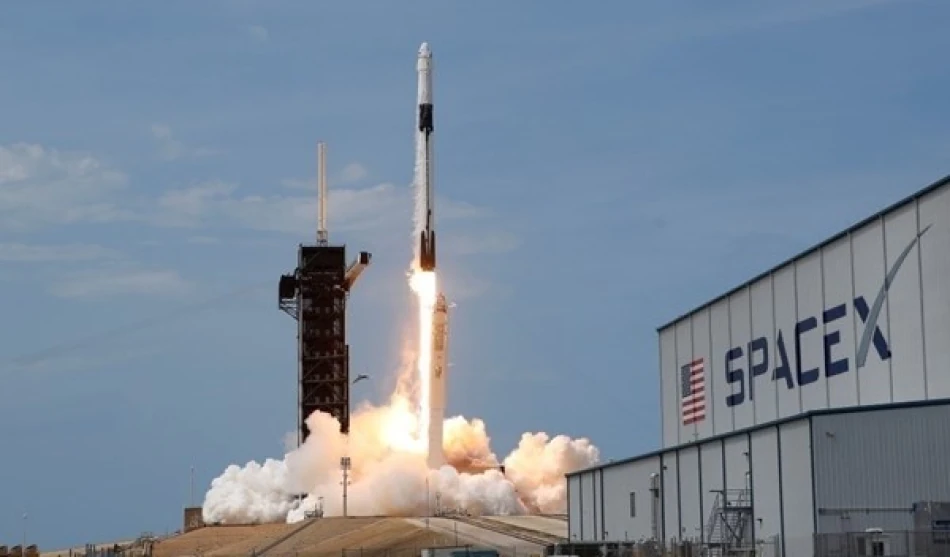
SpaceX Plans Ambitious Starship Rocket Launch: A New Era in Space Exploration
SpaceX's Starship Gamble: Why Musk's Mars Dreams Hang on the Next Test Flight
SpaceX is preparing for its tenth Starship test flight as early as Sunday, August 24, despite a troubling pattern of explosions and technical failures that have plagued the world's largest rocket throughout 2024. With Elon Musk still targeting Mars missions by 2026, the upcoming launch from Texas represents a critical moment for the company's ambitious interplanetary timeline and its controversial "fail fast, learn faster" development strategy.
A Year of Explosive Setbacks
The upcoming test follows three failed attempts in 2024 that have raised serious questions about Starship's readiness for deep space missions. The first two flights ended in spectacular explosions of the upper stage vehicle early in flight, sending debris raining down over the Caribbean Sea. The third attempt in late May showed more promise, successfully reaching space before a fuel leak caused mission controllers to lose control of the spacecraft, leading to its destruction before mission completion.
Even the Super Heavy booster, designed to be caught by mechanical arms in a groundbreaking maneuver unique to SpaceX, disintegrated before its planned water landing in the Gulf of Mexico. An additional ground test explosion in June has only added to concerns about the vehicle's reliability.
The High-Risk Development Philosophy
SpaceX's approach stands in stark contrast to traditional aerospace development. While NASA and established contractors typically spend years perfecting designs before test flights, Musk's company embraces a rapid prototyping strategy that accepts early failures as learning opportunities. This methodology proved successful with the Falcon 9 rocket, which now dominates the commercial launch market after its own series of early explosions.
However, Starship's scale and complexity present unprecedented challenges. At nearly 400 feet tall when fully assembled, the rocket system must master in-flight refueling, precision landings, and long-duration space travel—technologies that remain largely unproven at this scale.
Market and Mission Implications
The stakes extend far beyond SpaceX's corporate ambitions. NASA has contracted Starship as the lunar lander for its Artemis program, planning to return astronauts to the Moon's surface by 2026. The repeated failures could jeopardize this timeline and force the space agency to consider backup options, potentially costing taxpayers billions in delays.
For the commercial space industry, Starship represents a potential paradigm shift. Its massive payload capacity and reusable design promise to dramatically reduce launch costs, potentially opening new markets from space manufacturing to asteroid mining. However, continued setbacks may give competitors like Blue Origin's New Glenn or traditional providers additional time to develop competing capabilities.
The 2026 Mars Window
Musk's 2026 Mars mission timeline appears increasingly optimistic given current progress. Planetary alignment creates optimal Mars transfer windows roughly every 26 months, meaning delays could push the first Mars mission to 2028 or beyond. The company would need to demonstrate not only successful orbital flights but also in-space refueling, long-duration flight capabilities, and reliable landing systems—none of which have been proven with Starship.
The upcoming test flight will likely focus on achieving a successful controlled reentry and landing, building on lessons learned from previous attempts. Success could restore confidence in SpaceX's timeline, while another failure might force a more fundamental reassessment of the vehicle's design and development approach.
Learning from Failure or Failing to Learn?
The critical question facing SpaceX is whether its rapid iteration approach can overcome Starship's fundamental challenges or if the complexity of interplanetary travel demands a more methodical development process. While the company's track record with Falcon 9 suggests eventual success, the scale of Starship's ambitions—from Mars colonization to lunar bases—requires a level of reliability that remains elusive.
The August 24 test flight will provide crucial data about SpaceX's progress and whether Musk's bold timeline for Mars exploration remains achievable or requires a more realistic reassessment.
 Layla Al Mansoori
Layla Al Mansoori







